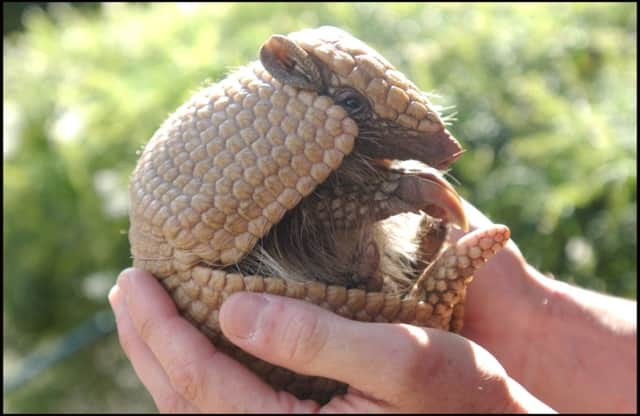Armadillos could be modern-day unicorns


A friend’s ten-year-old daughter amused me the other day when she told me of a debate taking place with her friends on the subject of unicorns. Her opponents argued that they were myths and, of course, they weren’t real. She responded by saying that actually they do exist, just in a different form, and that modern-day unicorns are actually called rhinos – rare, precious animals with horns. I liked her thinking, and found myself thinking that this childish debate actually had more depth to it than it initially suggested.
What if rhinos were to become extinct and as mythical as unicorns for future generations? Three rhinos are killed every day in the bid to meet demand for their horns. If this illegal wildlife trade does not cease and we hunt these animals to extinction, we may well be referring to them in the future as creatures in fairytales. It would be a sad day if rhinos, having been around for 40 million years, can only be known through books and film footage, and never in the wild.
Advertisement
Hide AdAdvertisement
Hide AdHowever, and this was my other train of thought, how many animals are out there that we know nothing of, that perhaps have some sort of mythical status among local people who have heard or been told of their existence but have never actually seen them for themselves? A study produced recently by the International Institute for Species Exploration at the State University of New York estimated that there are about ten million species awaiting discovery, five times the number that are already known.
It is an astonishing estimate and yet, sometimes, it is through the targeting and conservation of just one animal that you find there are many more belonging to a shared ecosystem.
Let me give you an example. One of the main projects of the Royal Zoological Society of Scotland is in the Brazilian Pantanal, the largest freshwater wetland in the world. In recent years it has become threatened by development programmes and changes in land management practices.
We employ Dr Arnaud Desbiez, regional co-ordinator in Latin America for research and conservation. In partnership with Brazilian NGO IPE (Instituto de Pesquisas Ecologicas), he has been working on the first long-term ecological study of giant armadillos in the Pantanal since 2011. The largest of the armadillo species can reach up to 150cm and weigh up to 50kg. Although they range over much of South America, almost nothing is known about them and most information is anecdotal. None is held in captivity although there may be unregistered individuals in some South American zoos. Due to its cryptic behaviour and low population densities, it has very rarely been seen and is threatened with extinction, classified as “vulnerable” on the IUCN Red List of Threatened Species. The main goal of the project was to investigate the ecology and biology of the species and understand its function in the ecosystem using radio transmitters, camera traps, burrow surveys, resource monitoring, resource mapping and interviews.
Thanks to Arnaud’s tenacity, he eventually captured a giant armadillo, two months after the study began. A year later, the study was expanded to include six-banded, nine-banded and southern naked-tailed armadillos, all of which were found to be present in the study site. These traps are helping conservationists estimate population density, identify social and breeding behaviour, investigate patterns of activity and monitor the use of these burrows by other species. As a result, the study was extended again last year to include southern tamanduas and giant anteaters, the latter’s use of burrows for movement and shelter confirming the giant armadillo’s role as a very important ecosystem engineer.
Who knows what will emerge from this study next? More species using the armadillos’ tunnels than previously expected, even some yet-to-be-discovered animals?
This type of research is vital to the overall conservation effort. Might armadillos be seen as modern-day unicorns? If it means people talk about them as rare and precious and needing our protection, I’m happy to help perpetuate a myth.
• Chris West is chief executive of the Royal Zoological Society of Scotland. Video diaries from the project can be followed on www.rzss.org.uk
SEE ALSO